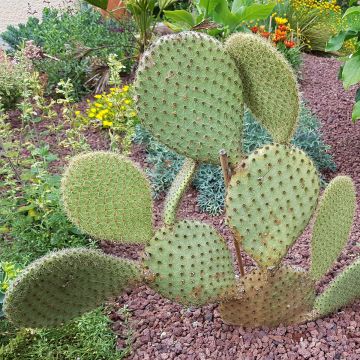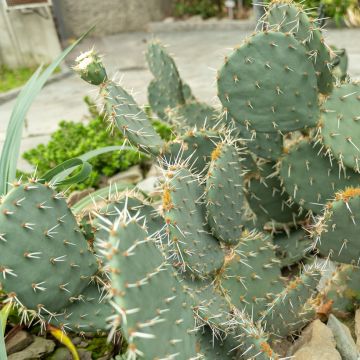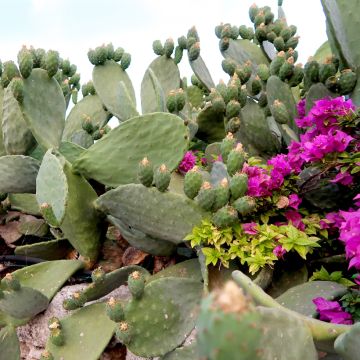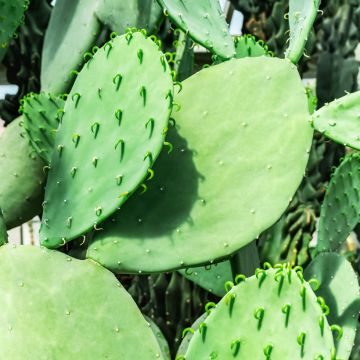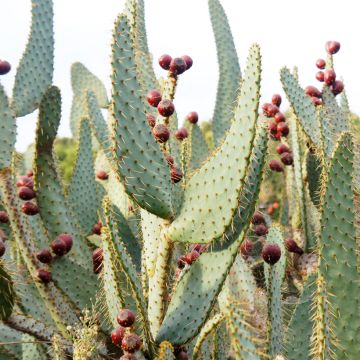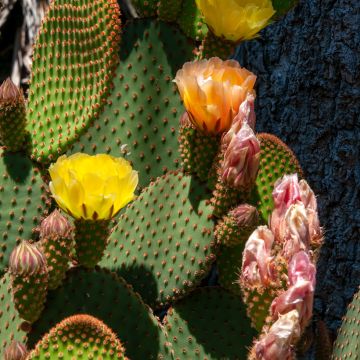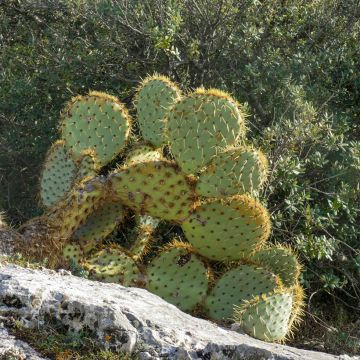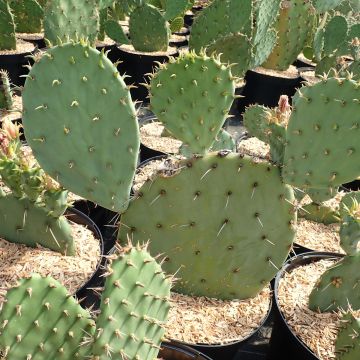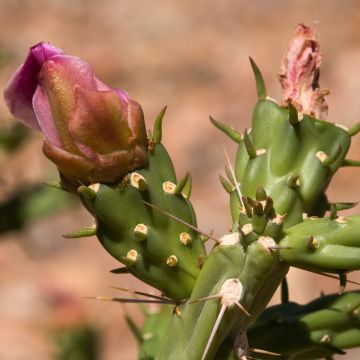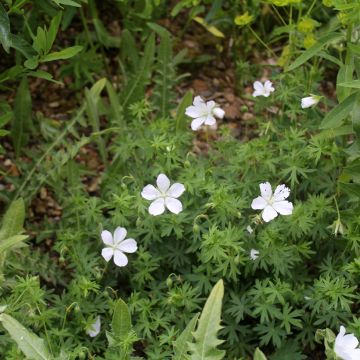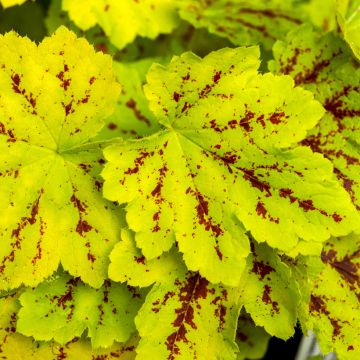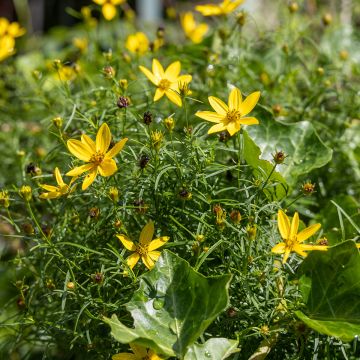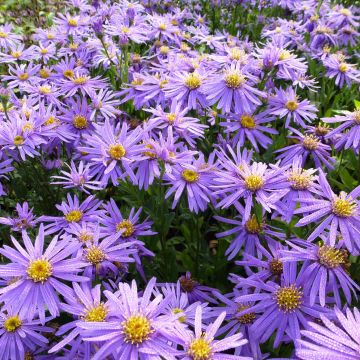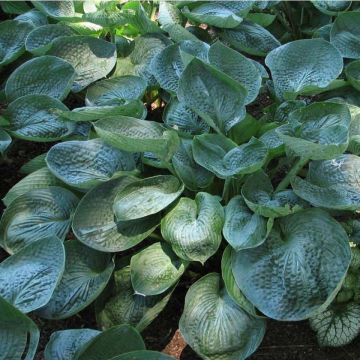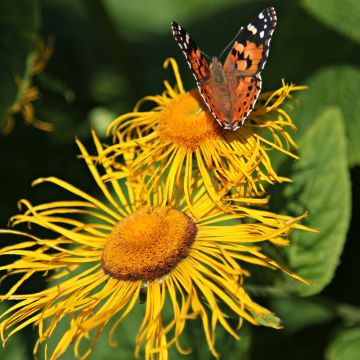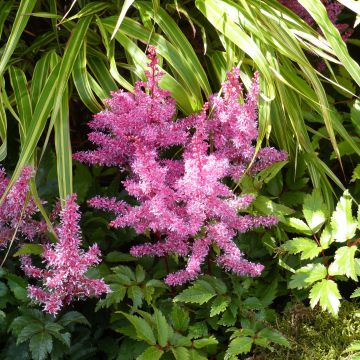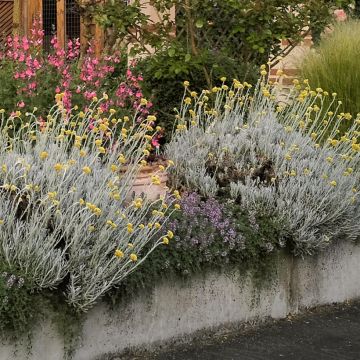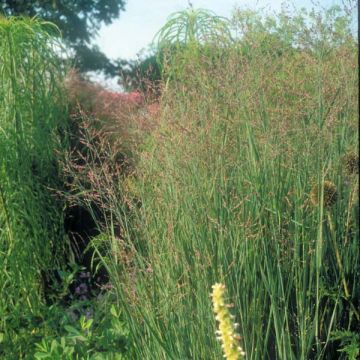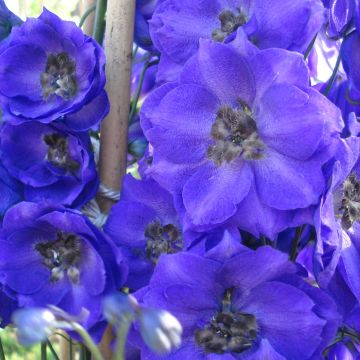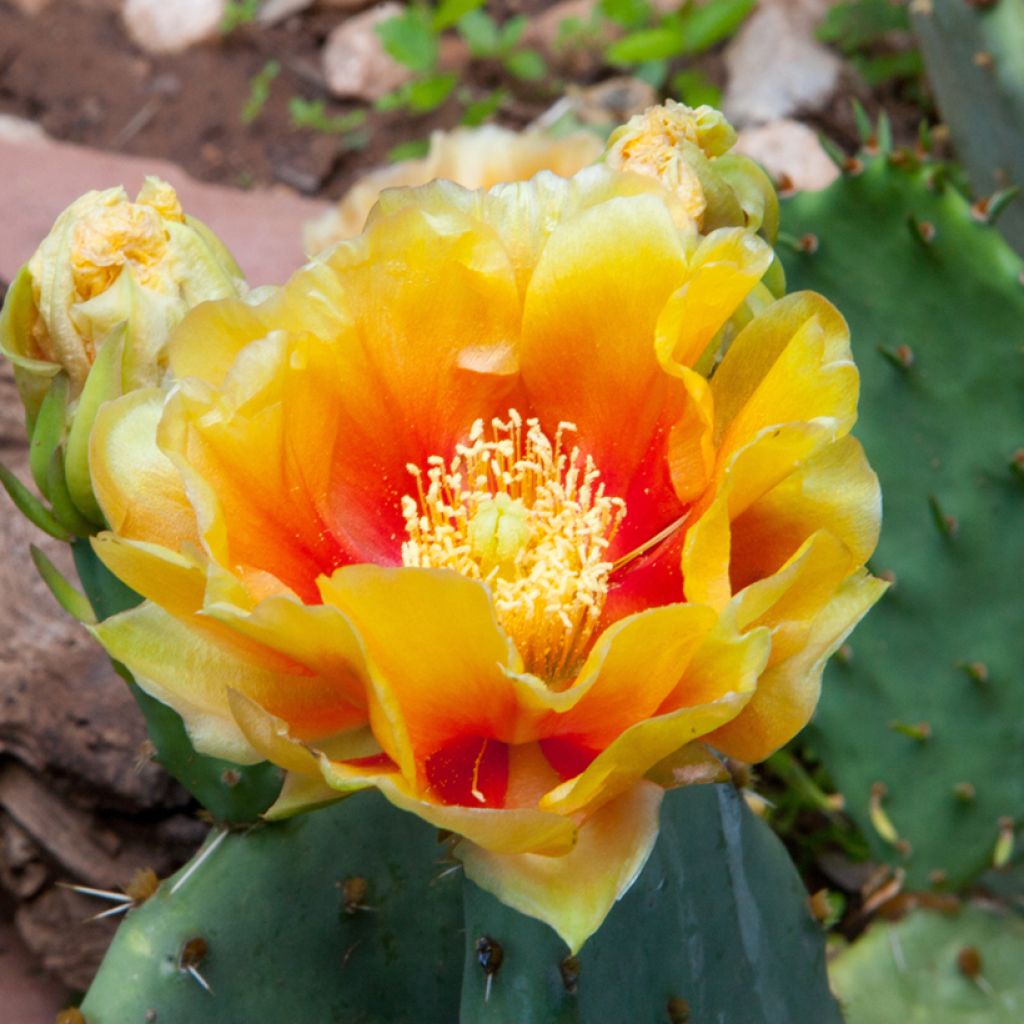

Opuntia dulcis - Prickly Pear
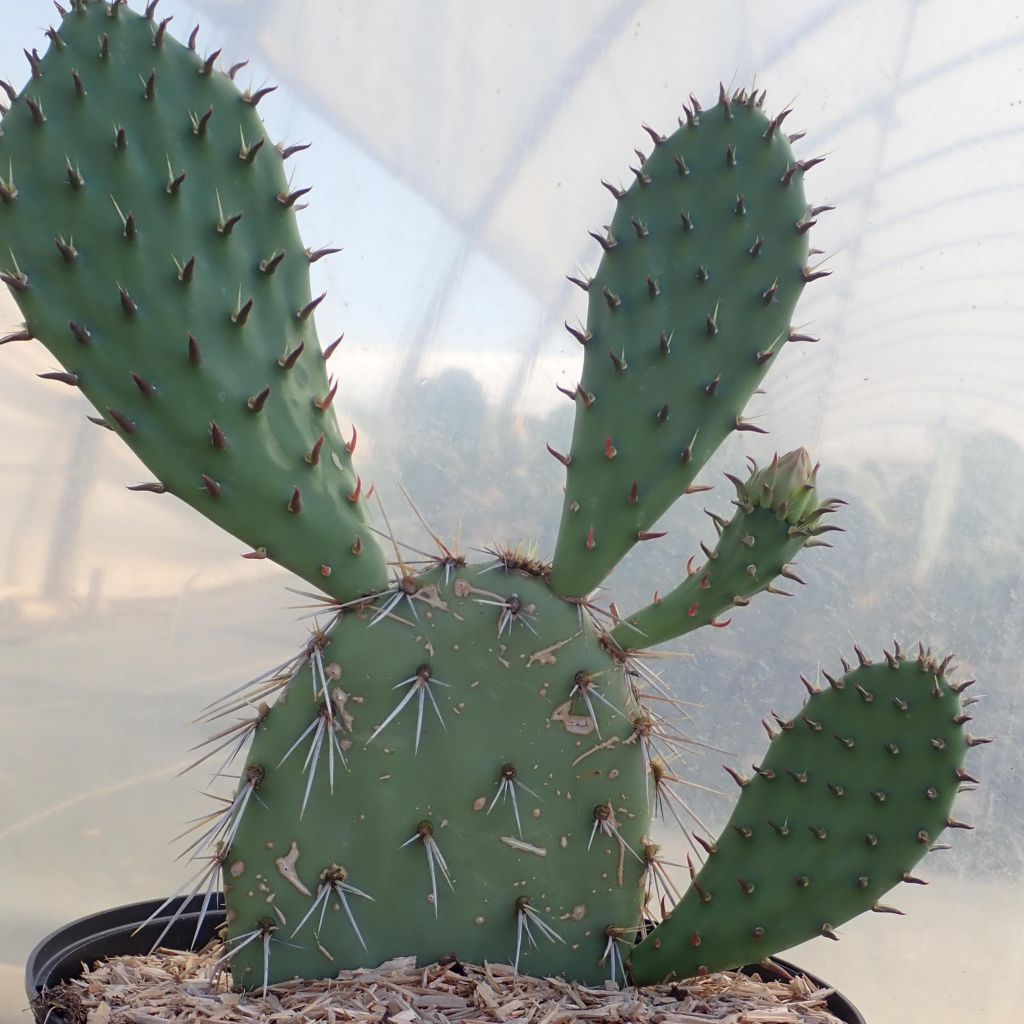

Opuntia dulcis - Prickly Pear
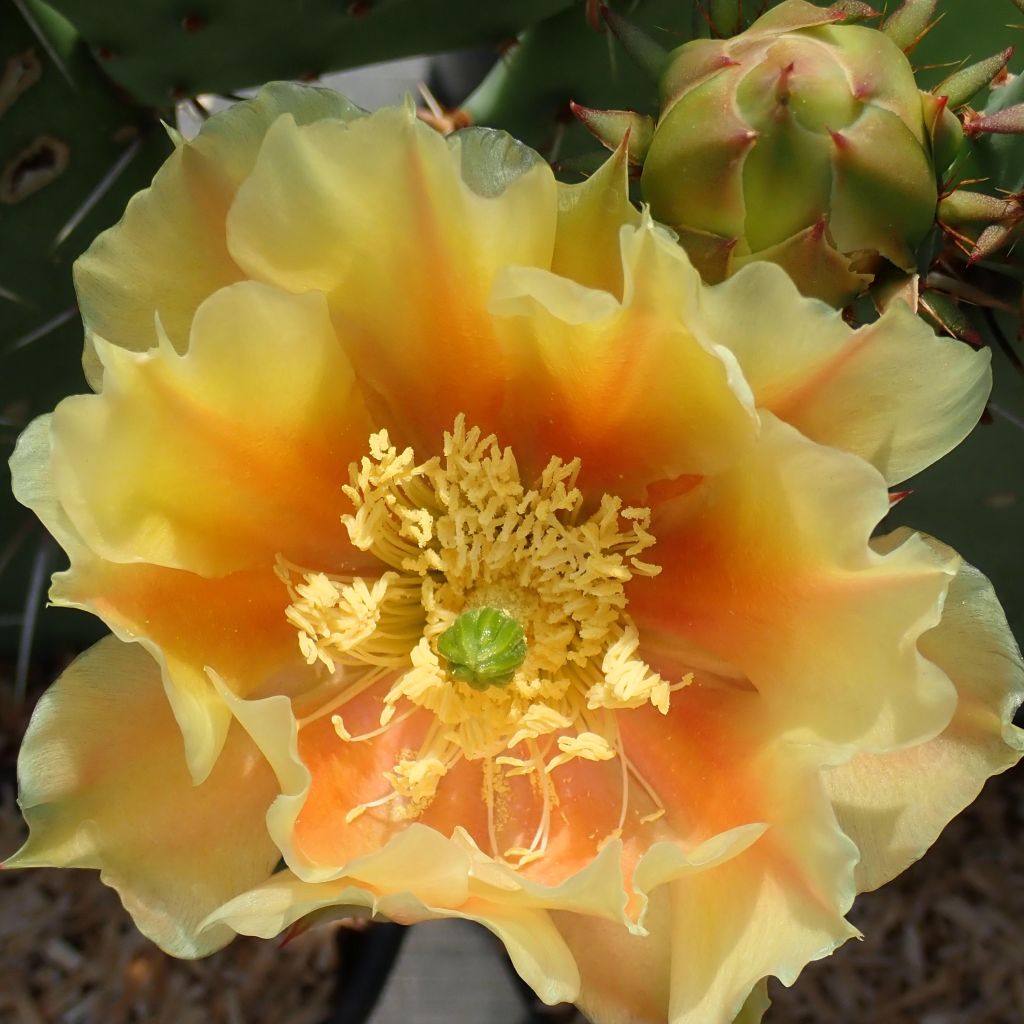

Opuntia dulcis - Prickly Pear
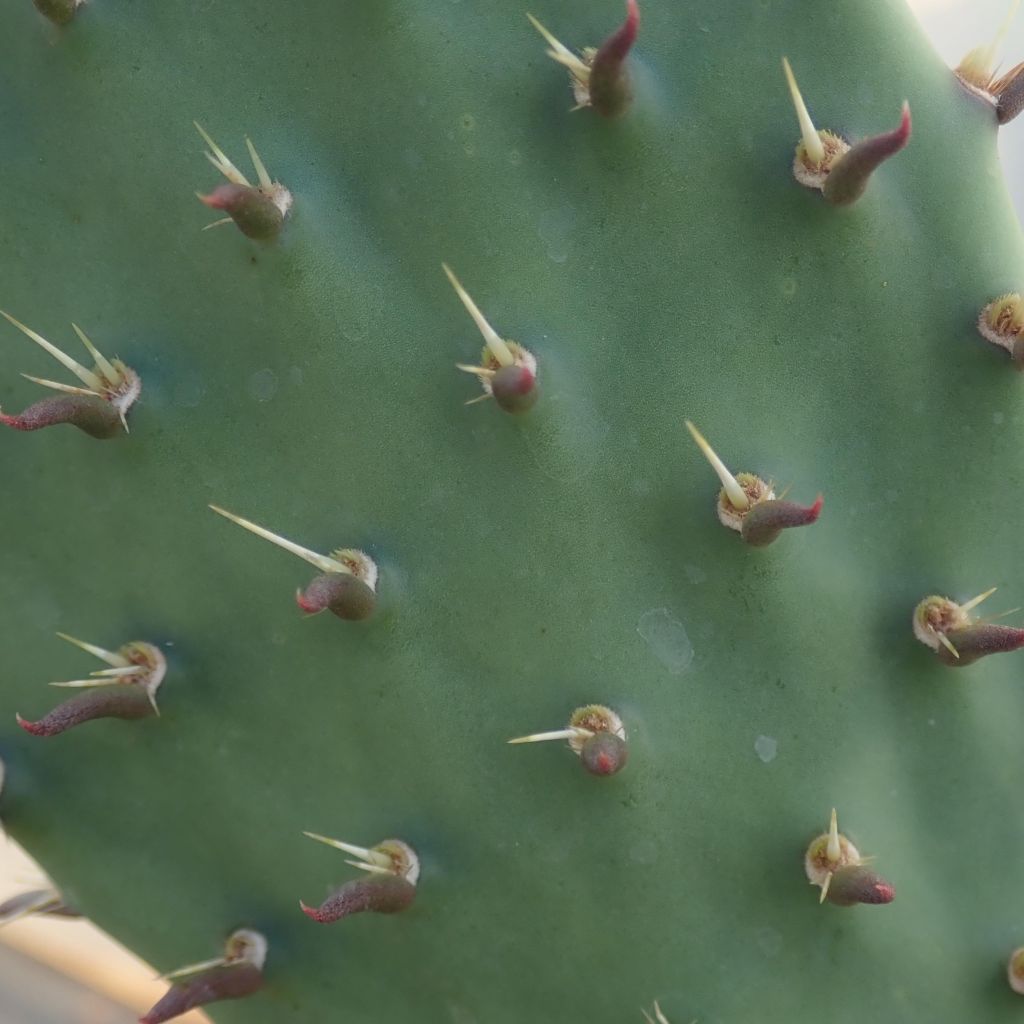

Opuntia dulcis - Prickly Pear
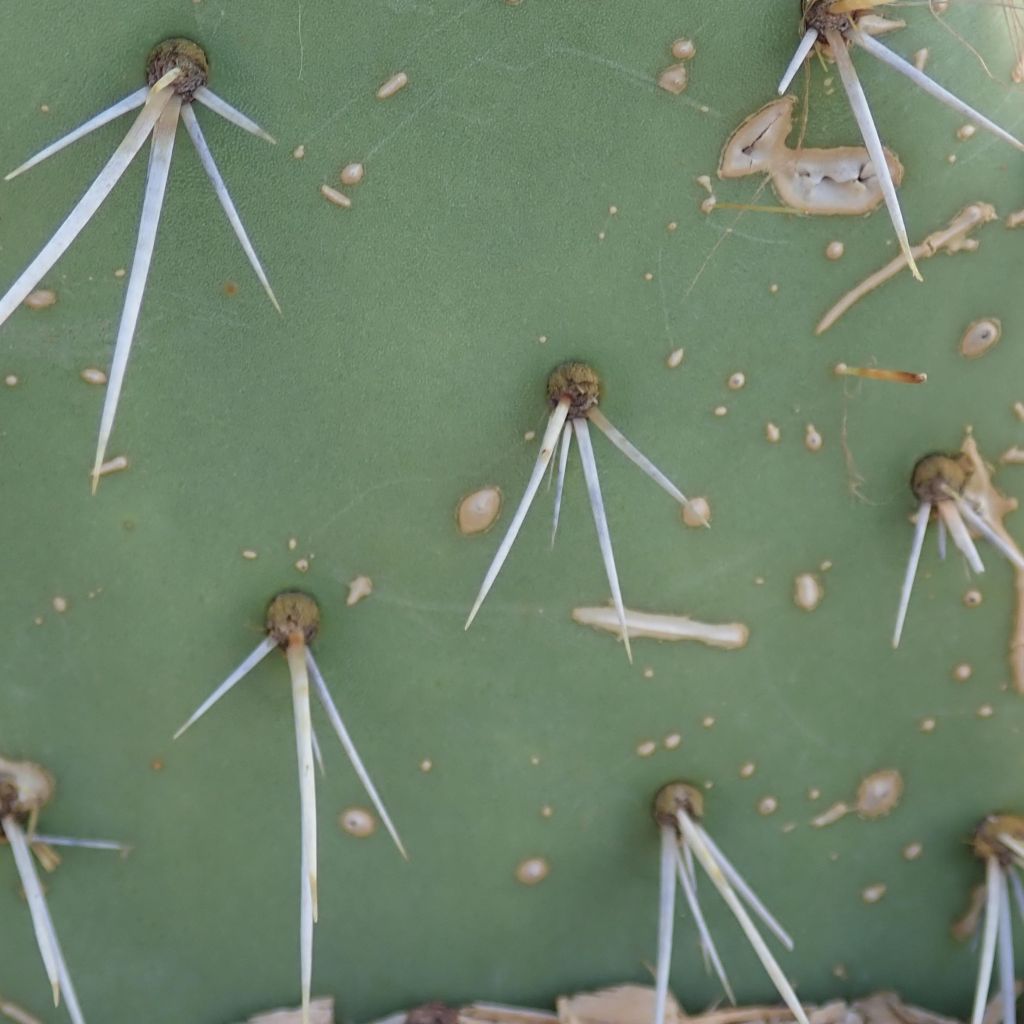

Opuntia dulcis - Prickly Pear
Opuntia dulcis - Prickly Pear
Opuntia dulcis
Opuntia, Prickly Pear
This item cannot be shipped to the selected country
Delivery charge from €5.90
More information
Schedule delivery date,
and select date in basket
This plant carries a 12 months recovery warranty
More information
We guarantee the quality of our plants for a full growing cycle, and will replace at our expense any plant that fails to recover under normal climatic and planting conditions.
From €5.90 for pickup delivery and €6.90 for home delivery
Express home delivery from €8.90.
Does this plant fit my garden?
Set up your Plantfit profile →
Description
The Opuntia dulcis is a variety of edible prickly pear cactus that is hardy enough to be grown outdoors in many regions, as long as it is planted in full sun in well-draining soil. It is an elegant Opuntia, with an upright habit and decorative spines, and its fruits have a sweet flavor. Its semi-double corolla flowers in yellow-orange with a red center are attractive in late spring. Hardy prickly pears are grown outdoors, in the ground and away from high-traffic areas, allowing them to express their spirit, reminiscent of the arid landscapes of North America.
The Opuntia dulcis, a close relative of the Prickly Pear (Opuntia ficus indica), is a succulent plant that lacks true leaves and belongs to the cactus family. This botanical species is native to an area ranging from west Texas to Arizona. It is of medium size, with an elegant and upright habit. An adult specimen can reach up to 1.20 m (4ft) in height and have a spread of 80 cm (32in) under optimal growing conditions. Its growth rate is moderate, with the plant producing 1 or 2 new pads per year from spring to autumn. The vegetation consists of pads or cladodes that are stacked on top of each other. They are flat, fleshy, thick, obovate in shape, and measure 16 to 25 cm (6 to 10in) in length and 12 to 15 cm (5 to 6in) in width. The base of the plant lignifies with age. The glaucous-colored surface of the pads is adorned with large ivory-white spines, which become darker towards the base and are grouped in pairs or fours. Small cushions, called areoles, are covered with tiny transparent spines called glochids, which are very dangerous when handling. The flowering period occurs from late May to July, depending on the climate. Several flowers appear around the edges of the pads, mainly towards their tips. They have a warm yellow colour tinged with orange and a red throat. The rounded cup-shaped flowers consist of several fine and slightly translucent petals, giving way to fruits that are red-purple when ripe, with an oblong to obconical shape, measuring 3.5 to 4.5 cm (1 to 2in) in length and 2.5 to 3 cm (1in) in diameter. These fruits are smooth, with a few rare glochid-covered areoles and almost devoid of spines. The juicy and sweet pulp of the fruit can be pink, violet, red, or greenish.
Suitable for outdoor cultivation in not-too-cold regions, this Prickly Pear is astonishing in a minimalist setting. It is spectacular against a backdrop of rocks and blue sky, and naturally structures exotic and contemporary landscapes. It will effectively protect the boundaries of a dry and wild garden. It can be paired with hardy agaves, Nolinas, and tree-like Euphorbias. Associate it with relatively hardy columnar cacti such as Cleistocactus strausii or Cylindropuntia imbricata. Keep it away from pathways and children due to its formidable spines.
Tasting the fruits: Care should be taken to remove the tiny, formidable spines by "flaming" them like poultry. Then cut them in half and scoop out the pulp.
Attention, the opuntia may be tough, but its joints are particularly brittle! If a pad falls during transport or handling, don't worry, it's what allows this conqueror to spread in nature; each fallen pad is capable of generating a whole new plant! This is a great opportunity to have a new Opuntia: simply leave the pad exposed to the air for a few days until the tissue heals. Then plant this pad vertically, burying 1/3 of its surface, in a well-draining pot with a mix of sand and potting soil. Place it in the sun, water it when you remember, and it will grow effortlessly!
Report an error about the product description
Opuntia dulcis - Prickly Pear in pictures
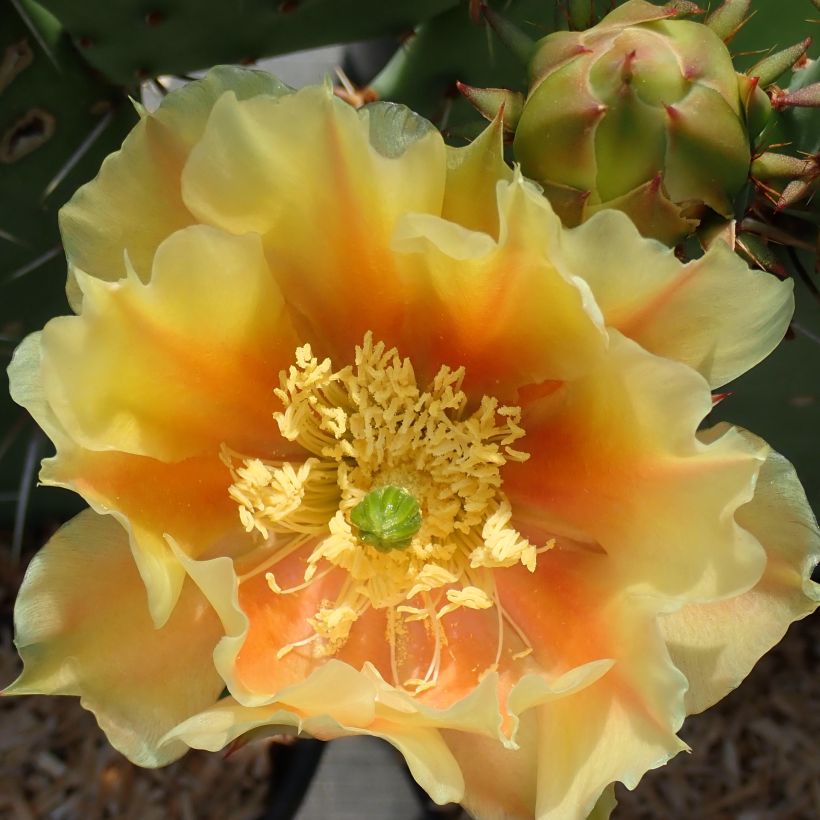

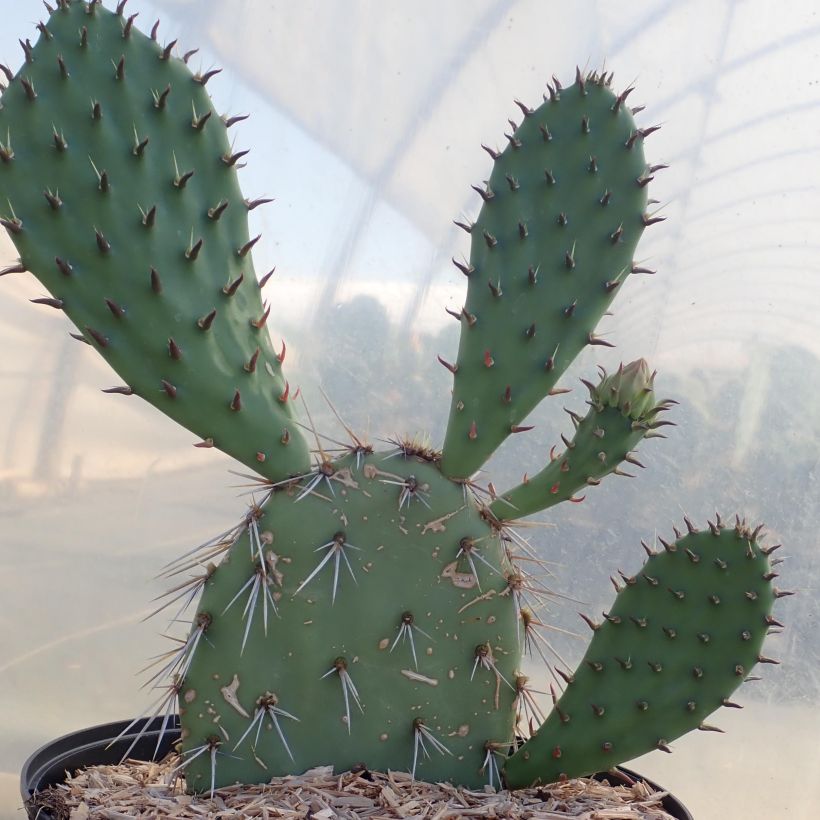

Flowering
Foliage
Plant habit
Botanical data
Opuntia
dulcis
Cactaceae
Opuntia, Prickly Pear
North America
Other Opuntia
Planting and care
Plant Opuntia dulcis in spring or early autumn, in full sun, or at most in partial shade in hot and dry climates, in preferably poor, even rocky, limestone, sandy, well-drained soils. It tolerates a little winter humidity in porous soil that does not retain water, and appreciates dry, even arid soils in summer. It can withstand frost down to -14°C (6.8°F) at the extreme. Its segments sometimes collapse in winter due to the cold, but 'reinflate' in spring. This species also tolerates sea spray and can therefore be grown in coastal regions. It is not known to be susceptible to any pests.
Cultivation substrate: 3/4 compost + 1/4 vegetable soil + organic fertilizer for potted plants. Sandy, very rocky soil, poor in clay for open ground cultivation.
Propagation by cuttings of prickly pears is easy: take a segment at a junction, place it on a cactus soil substrate for a few days, until a healing callus forms. Then, plant the base of the cutting a little deeper into the soil and water regularly. The plant will not flower or bear fruit before the age of 3 years.
Handle your cacti with gloves and protective goggles.
Planting period
Intended location
Care
-
, onOrder confirmed
Reply from on Promesse de fleurs
Summer flowering perennials
Haven't found what you were looking for?
Hardiness is the lowest winter temperature a plant can endure without suffering serious damage or even dying. However, hardiness is affected by location (a sheltered area, such as a patio), protection (winter cover) and soil type (hardiness is improved by well-drained soil).

Photo Sharing Terms & Conditions
In order to encourage gardeners to interact and share their experiences, Promesse de fleurs offers various media enabling content to be uploaded onto its Site - in particular via the ‘Photo sharing’ module.
The User agrees to refrain from:
- Posting any content that is illegal, prejudicial, insulting, racist, inciteful to hatred, revisionist, contrary to public decency, that infringes on privacy or on the privacy rights of third parties, in particular the publicity rights of persons and goods, intellectual property rights, or the right to privacy.
- Submitting content on behalf of a third party;
- Impersonate the identity of a third party and/or publish any personal information about a third party;
In general, the User undertakes to refrain from any unethical behaviour.
All Content (in particular text, comments, files, images, photos, videos, creative works, etc.), which may be subject to property or intellectual property rights, image or other private rights, shall remain the property of the User, subject to the limited rights granted by the terms of the licence granted by Promesse de fleurs as stated below. Users are at liberty to publish or not to publish such Content on the Site, notably via the ‘Photo Sharing’ facility, and accept that this Content shall be made public and freely accessible, notably on the Internet.
Users further acknowledge, undertake to have ,and guarantee that they hold all necessary rights and permissions to publish such material on the Site, in particular with regard to the legislation in force pertaining to any privacy, property, intellectual property, image, or contractual rights, or rights of any other nature. By publishing such Content on the Site, Users acknowledge accepting full liability as publishers of the Content within the meaning of the law, and grant Promesse de fleurs, free of charge, an inclusive, worldwide licence for the said Content for the entire duration of its publication, including all reproduction, representation, up/downloading, displaying, performing, transmission, and storage rights.
Users also grant permission for their name to be linked to the Content and accept that this link may not always be made available.
By engaging in posting material, Users consent to their Content becoming automatically accessible on the Internet, in particular on other sites and/or blogs and/or web pages of the Promesse de fleurs site, including in particular social pages and the Promesse de fleurs catalogue.
Users may secure the removal of entrusted content free of charge by issuing a simple request via our contact form.
The flowering period indicated on our website applies to countries and regions located in USDA zone 8 (France, the United Kingdom, Ireland, the Netherlands, etc.)
It will vary according to where you live:
- In zones 9 to 10 (Italy, Spain, Greece, etc.), flowering will occur about 2 to 4 weeks earlier.
- In zones 6 to 7 (Germany, Poland, Slovenia, and lower mountainous regions), flowering will be delayed by 2 to 3 weeks.
- In zone 5 (Central Europe, Scandinavia), blooming will be delayed by 3 to 5 weeks.
In temperate climates, pruning of spring-flowering shrubs (forsythia, spireas, etc.) should be done just after flowering.
Pruning of summer-flowering shrubs (Indian Lilac, Perovskia, etc.) can be done in winter or spring.
In cold regions as well as with frost-sensitive plants, avoid pruning too early when severe frosts may still occur.
The planting period indicated on our website applies to countries and regions located in USDA zone 8 (France, United Kingdom, Ireland, Netherlands).
It will vary according to where you live:
- In Mediterranean zones (Marseille, Madrid, Milan, etc.), autumn and winter are the best planting periods.
- In continental zones (Strasbourg, Munich, Vienna, etc.), delay planting by 2 to 3 weeks in spring and bring it forward by 2 to 4 weeks in autumn.
- In mountainous regions (the Alps, Pyrenees, Carpathians, etc.), it is best to plant in late spring (May-June) or late summer (August-September).
The harvesting period indicated on our website applies to countries and regions in USDA zone 8 (France, England, Ireland, the Netherlands).
In colder areas (Scandinavia, Poland, Austria...) fruit and vegetable harvests are likely to be delayed by 3-4 weeks.
In warmer areas (Italy, Spain, Greece, etc.), harvesting will probably take place earlier, depending on weather conditions.
The sowing periods indicated on our website apply to countries and regions within USDA Zone 8 (France, UK, Ireland, Netherlands).
In colder areas (Scandinavia, Poland, Austria...), delay any outdoor sowing by 3-4 weeks, or sow under glass.
In warmer climes (Italy, Spain, Greece, etc.), bring outdoor sowing forward by a few weeks.

































